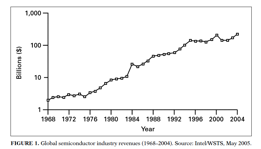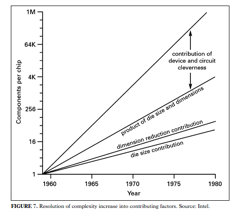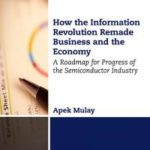This has been originally published on EBN
In 1965, Intel co-founder Gordon Moore, made the observation that, in the history of computing hardware, the number of transistors on integrated circuits doubles approximately every two years. (This oft-quoted piece of wisdom appeared in an article titled Cramming More Components onto Integrated Circuits in Electronics Magazine on April 19, 1965.
This law is now used in the semiconductor industry to guide long-term planning and to set targets for research and development. In 1960, just a handful of years before he made his famous observation, Moore was very pessimistic about the future of integrated circuits (ICs). However, few years down the line, his observation led to the transformation of global semiconductor industry.
April 19th, 2015 marks the 50th Anniversary of Moore’s Law, an important landmark for global semiconductor industry. Let us take a look at the original definition of Moore’s Law:
“The number of transistors per square inch on integrated circuits had doubled every year since their invention and this trend will continue into the foreseeable future.”
Basically, Moore’s Law provided a predictable business model for semiconductor business. It posited that when companies continue to invest in advancements in shrinking transistor dimensions the result will increase productivity, profitability, and performance of ICs. A predictable business model for any industry ensures better return on investments (RoI) for the industry. Moore’s Law has provided 50 years of business model predictability for global semiconductor industry. It should not be considered as a self-fulfilling prophecy, as claimed by many semiconductor industry professionals.
Over last 50 years, the progress of Moore’s law has been scaling the transistor dimensions at all costs and ignoring macroeconomic parameters of the economy in this process. No progress is sustainable without a sustainable macroeconomic progress. Hence, For Moore’s law to continue benefiting today’s knowledge based economy, it would certainly need a progress on physical side but would also need for an equally good progress on economic side. Only when both physics and economics succeed, Moore’s law can succeed after its 50th Anniversary, until the physical dimensions cannot be scaled any further, thus bringing about a demise of Moore’s Law due to Physics, and not Economics.

In fact, there was even a period during the 1970s when the industry was more than doubling the total number of transistors ever made every year, so that more electronics were built each year than existed at the beginning of the year. The pace has slowed recently but is still on a good growth curve.
Now, the question arises, “Why has this pace of growth slowed recently?” We need to consider factors contributing to the progress of Moore’s Law were not taken into consideration originally. David C. Brook, in Chapter 7 of his 2006 publication entitled Understanding Moore’s Law: Four Decades of Innovation, explored these questions. The answers would likely amaze Moore himself: common sense macroeconomics.
As shown below in figure to the left, all the contributing factors to resolution of complexity of integrated circuits have been the contributors to the supply side of the silicon in economy. There is no mention of growth in demand for this manufactured silicon to ensure its consumption.

As progress cannot be sustained without a sustainable macroeconomic progress, the pace of growth has slowed recently which, in turn, has slowed investments by semiconductor giants like Intel, TSMC, and Samsung in 450 mm diameter silicon wafers (which offers a potential path for generating more revenue for industry). As long a semiconductor industry’s progress complies with a sustainable macroeconomic progress, the progress of Moore’s law beyond 50 years can continue to benefit the semiconductor industry. Today, Moore’s Law needs to be redefined for a sustainable macroeconomic progress.
In my recently released book titled Mass Capitalism: A Blueprint for Economic Revival, I said this:
Time and space are changing, and the semiconductor industry will have to adjust with those changes. The principles of Mass Capitalism will not change; rather the application of these principles will have to adjust with the changing circumstances. The semiconductor industry will have to move forward by recognizing and adjusting with changes in time and space.
Based on this feature, Moore’s Law should also adjust to changes in time and space. For a predictable business model for semiconductor industry, we need to Moore’s Law at 50:
The macroeconomic policies should establish true free market economy in U.S. semiconductor industry such that the continued growth in the number of transistors per square inch on integrated circuits grows in proportion to the consumer purchasing power in the economy to ensure a sustainable consumption of the manufactured electronics and sustains the increased demand for more electronics. This shall ensure that doubling of number of transistors on Integrated Circuits would continue into the foreseeable future.
Happy 50th birthday to Moore’s law—and here’s a wish for another half century for this important theory


Recent Comments